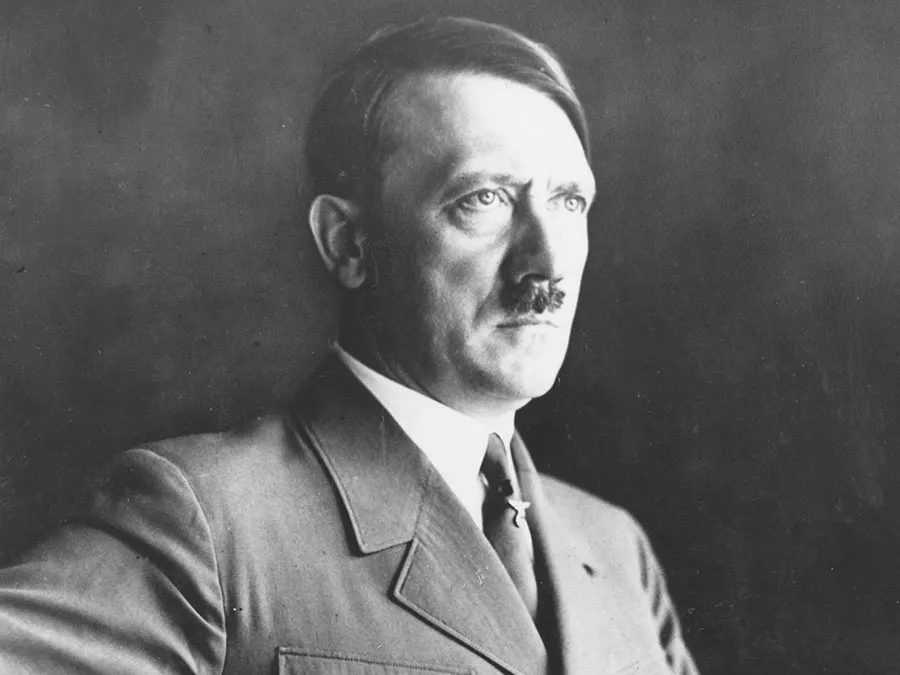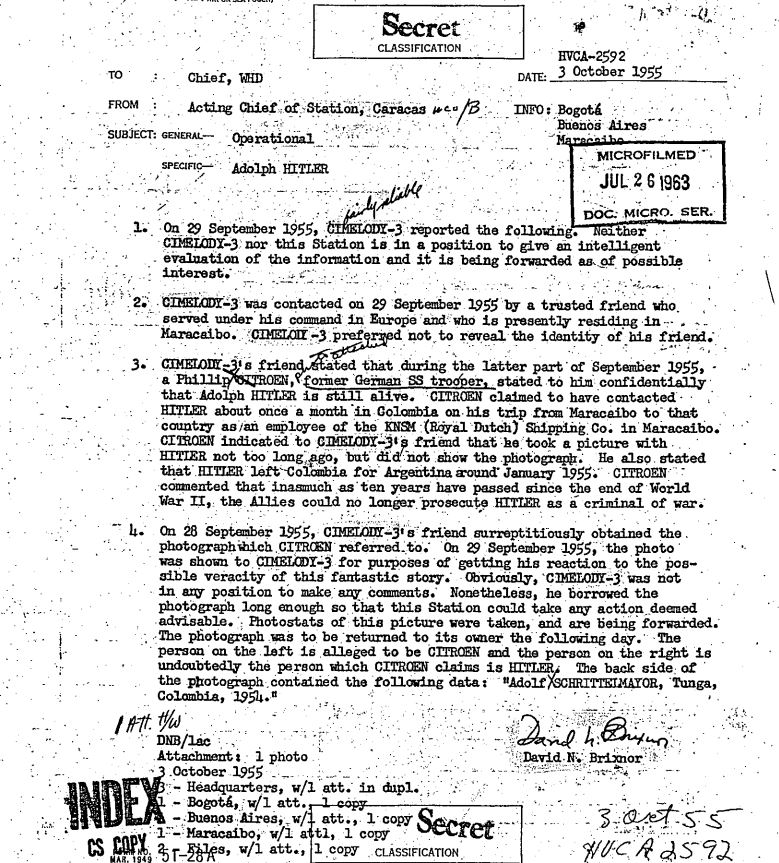
A declassified CIA memo from 1954 has resurfaced online, sparking fresh discussions about Adolf Hitler’s fate. The document, released years ago, claims Hitler survived World War II and lived in South America.

This report originated from a CIA response to allegations that Hitler had been hiding in Colombia. According to the document, a former SS officer told an acquaintance that Hitler was alive and residing in South America.
The memo states that an SS officer traveled from Caracas to Colombia to visit Hitler monthly.

However, the CIA dismissed these claims, linking them to Soviet disinformation.
1. Key Takeaways
The declassified CIA document, labeled HVCA 2592, was written in October 1955. It reviews intelligence suggesting Hitler escaped Germany, lived in Colombia, and later moved to Argentina. The report focuses on a supposed photograph of Hitler and a former SS officer’s testimony.
Despite the shocking nature of the claim, the CIA called it unverified and “fantastic.” The agency forwarded the report internally without supporting evidence. However, the document circulated widely among intelligence stations in Latin America.
2. Overview of the Memo
- Date: October 3, 1955
- Source: A CIA station report based on intelligence from a contact codenamed CIMELODY-3. This source relayed claims from a former SS officer who said Hitler was alive in Colombia before relocating to Argentina.
- Evidence Cited: A covertly obtained photograph labeled “Adolf Hitler, Mayor, Tunga, Colombia, 1954.”
- CIA’s Assessment: The agency did not verify the claims but forwarded the information as “possibly of interest.”
3. Intelligence Perspective
Credibility Concerns
- The claims relied entirely on secondhand and thirdhand accounts.
- The CIA officer who received the report admitted they could not verify its accuracy.
- No forensic examination, corroborating testimony, or investigative follow-ups were recorded. The evidence consisted of a single photo and an anecdote.
Post-War Intelligence Landscape
- The Cold War era produced many intelligence reports on fugitive Nazis. Some, like Adolf Eichmann’s escape to Argentina, were true. Others were unverified rumors.
- Disinformation was widespread, often spread by exiled groups, opportunists, or rival intelligence agencies.
4. Soviet Disinformation Tactics
The report aligns with classic Soviet misinformation strategies. These “active measures” aimed to mislead rather than prove facts.
- Tactic: Spread a plausible rumor to force the CIA to allocate resources for investigation.
- Objective: Undermine trust in U.S. intelligence, overwhelm communication channels, and waste time on false leads.
- Why Use Hitler? The idea that history’s most infamous war criminal escaped was compelling. This story could create doubt, stir fear, and fuel speculation.
- Method: The Soviets used Latin American contacts, former Nazi circles, and alleged SS veterans to spread the rumor. Tying it to real Nazi escape routes added credibility.
This pattern matches other Soviet deception campaigns:
- The false claim that the U.S. created AIDS (Operation INFEKTION).
- Forged documents suggesting the U.S. employed Nazi war criminals.
- Psychological warfare targeting German and Latin American media.
5. Conclusion
Rather than revealing Hitler’s survival, this document highlights Cold War psychological warfare. It shows how intelligence agencies became entangled in misinformation.
The report does not confirm Hitler’s escape but demonstrates Soviet success in manipulating narratives. Over a dozen CIA personnel processed this claim, proving how myths distracted intelligence operations.
This document does not provide evidence of Hitler’s survival. Instead, it exposes how disinformation shaped Cold War intelligence strategies.



